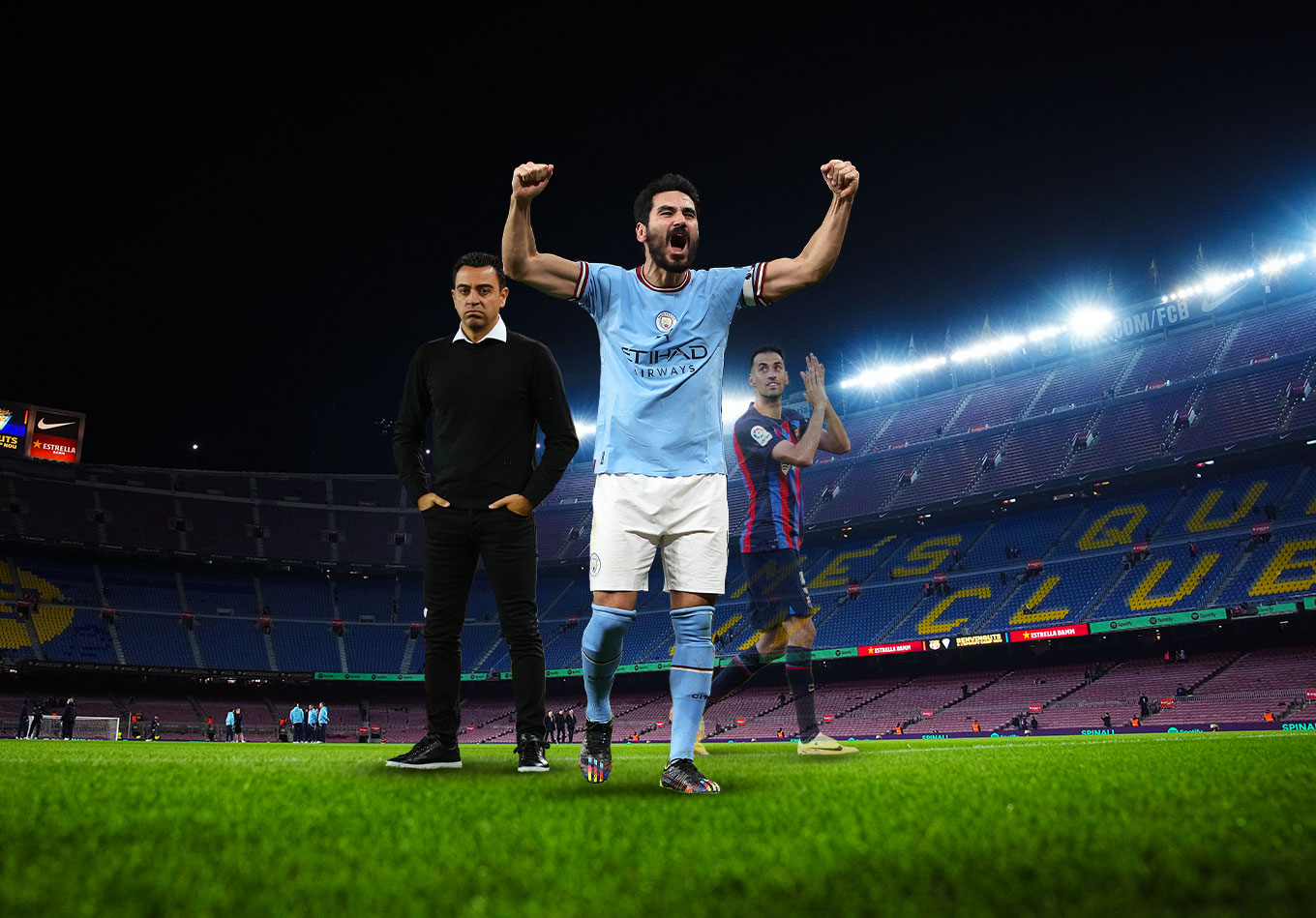It’s impossible to replace Sergio Busquets, so why bother? Barcelona have decided they would rather change their tactics than have an ersatz Busquets at the base of their midfield next season.
Martin Zubimendi seems the most obvious replacement if and when Barcelona have the funds to buy him. But he is content in San Sebastián with Real Sociedad heading into their first UEFA Champions League season in a decade. Barca are playing it cool and have decided against forcing the issue.
The answer to their Busquets conundrum will reveal itself in time.
Instead, Busquets’ replacement will be a portmanteau. A sprinkle of Pep Guardiola, some Busquets, a little Frenkie de Jong and something new entirely. Barcelona ruled the roost in La Liga last season but they were knocked out of Europe twice and looked like a team with problems on the biggest stage during those games. Xavi is cognisant that football is evolving and that Barcelona can’t stand still. Once the bastion of possession-based football, they turned into something a little more malleable last season. They were more vertical at times and were happier to soak up pressure when necessary.
We have all heard Vicente del Bosque’s famous quote about watching Busquets and seeing the entire game but if you focus solely on the 34-year-old, you might miss what’s happening around him and the evolution of the game since Busquets turned himself into the best holding midfielder in the world.
Enter İlkay
İlkay Gündoğan is a signing that meets plenty of needs for Barcelona. The 32-year-old is coming off the back of his most successful and decisive season as a professional. The parallels will be drawn with Busquets even if they’re not the same. The German has played as the single pivot but not since his Borussia Dortmund days.
At 32, he knows his way around a midfield and can play in almost any role asked of him but that’s not to say his qualities in each of those positions would hold up over the course of a season. Gündoğan is a non-sequitur, especially when you look at him as a Busquets replacement. Instead, we have to look at the possibilities now with several number 8s at Xavi’s command and what might come next for his Barcelona side.
Xavi Widens the Net
If Xavi had his way, football would be made up of 10 number 8s roaming around the field in search of space with one ball-playing goalkeeper to pass it to them. When you’re a hammer, every problem you see is a nail. Xavi himself was an 8, he was the 8 that arguably set up Guardiola for success in what was one of the best teams ever. History doesn’t repeat itself but it rhymes and now Xavi will manage the number 8 who helped Pep to his most successful season since his days at Barcelona.
When Busquets was absent last season, Xavi played with De Jong and Franck Kessié at times. He also used Sergi Roberto on occasion and even Eric García as the defensive midfielder. But what we saw from Kessié and De Jong was a traditional double pivot with the two alternating between going forward, pressing or dropping into the back line when necessary. This is likely what we will see with the arrival of Gündoğan.
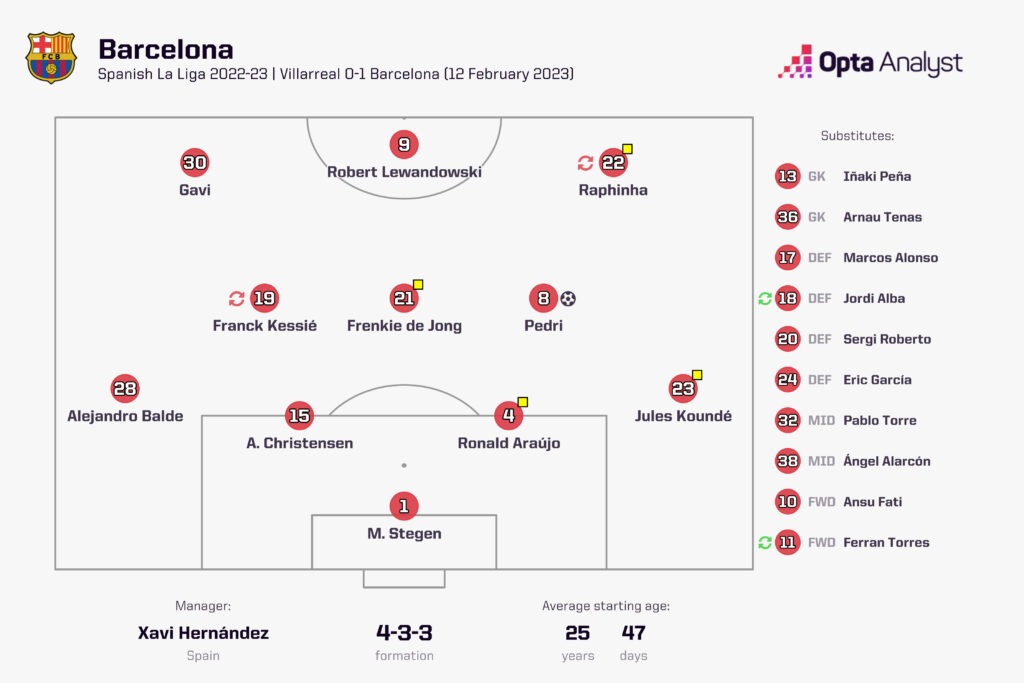
Against Villarreal at the start of last year, Xavi opted for Kessié and De Jong in a double pivot with Busquets sidelined. Xavi realised Kessié might have offered some defensive help alongside De Jong but the Ivorian wasn’t adventurous enough in the offensive phase or technical enough to receive the ball under pressure against Villarreal’s press. Barcelona, as a result, were too impatient and too vertical. It was the second-lowest possession total they had all season (46.5%) after the Copa del Rey semi-final first leg against Real Madrid when they had 35.3%. Below is an example of a time when Kessié was available for the possession pass inside but Alejandro Balde goes long instead.
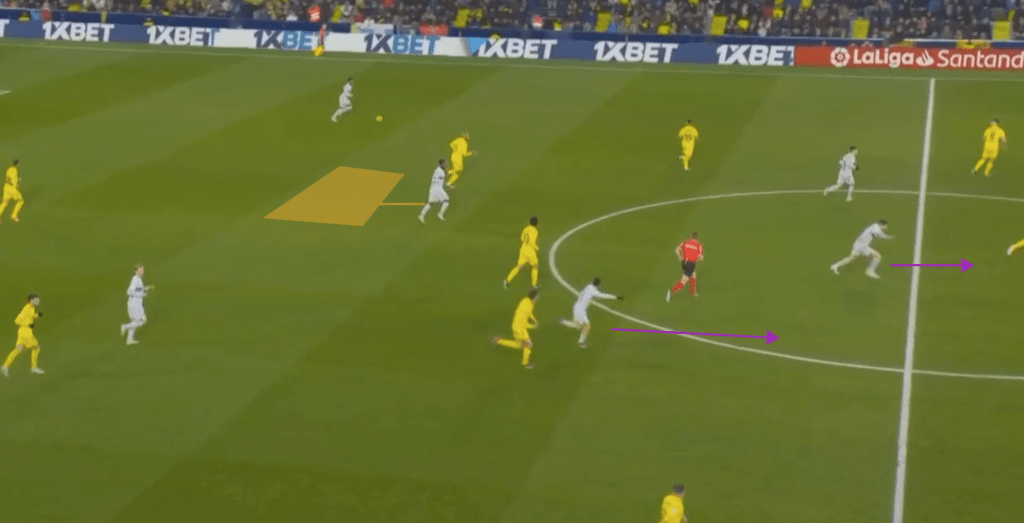
Against Rayo Vallecano, another example when Barcelona were too vertical, Pedri dropped beside De Jong but Barcelona seemed to want to go long. They couldn’t hold their nerve, something non-negotiable for Barca. “We failed to understand that the play was inside. We abused the long pass,” Xavi said after the game.
Below is an example of this where Pedri wanted the ball in the tightest of spaces where he could spring De Jong with a one-touch pass. Instead, Ronald Araújo goes out long to the left. He overhits it and Pedri chastises his teammate. This happened time and again this season, with Pedri begging his teammates to calm down and play the ball inside. Take the ball, pass the ball is the mantra, not take the ball, kick it long.
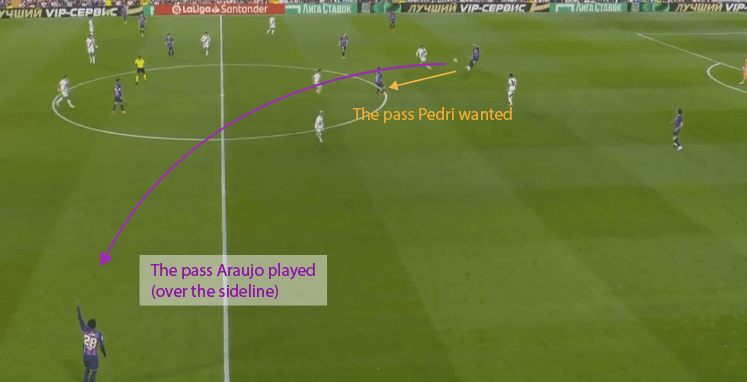
Xavi has asked Pedri to be more of a goal threat and he finished last season with his highest total since joining Barcelona (six) but his manager wants more goals and more assists. The youngster can’t do that when he is being asked to drop and build play and then arrive in the box to both create and finish chances. Ironically, it was Pedri who won it for Barcelona against Villarreal when he finished a lovely move with some one-touch football that would bring a tear to Barça purists’ eyes.
Gündoğan can help Pedri be more decisive in front of goal. Adding the German midfielder into the mix adds another player who can receive the ball in the tightest of spaces and play with a cool head. There’s a reason why Guardiola made him his first ever signing when he arrived at Manchester City.
The two examples mentioned, against Quique Setién’s Villarreal and Andoni Iraola’s Rayo, are two of the most difficult assignments in Spain because of their asphyxiating pressure but in those games Gündoğan will be needed to help control things, and to wrestle back possession against teams who fight for the ball.
Against Real Mallorca, a far more defensive side playing a 5-4-1, Kessié started again but in a more advanced role. In that position, he lacked the nuance Gündoğan possesses in the final third. He played 67 minutes in that game and struggled to find or interpret the space. In the image below, he is basically playing in Robert Lewandowski’s position.
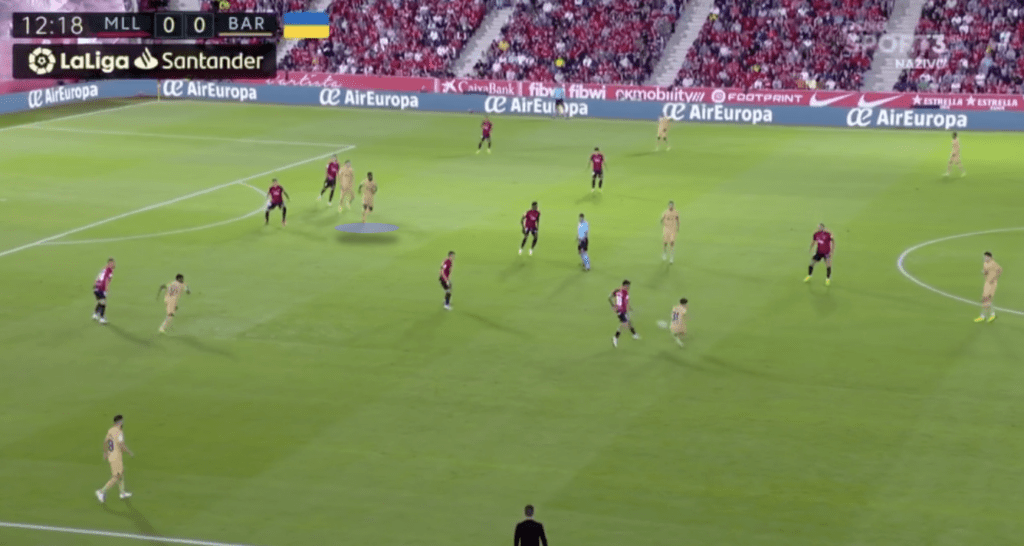
His 31 touches in that appearance is one of his lowest figures with as many minutes played last season. Only against Getafe in 68 minutes did he touch the ball fewer times (27).
During that Mallorca game, Busquets did start with De Jong injured. Next season, that will be Gündoğan’s role with one of either De Jong or Eric García as the deepest midfielder.
Another way we might see Xavi use Gündoğan is in Gavi’s current role with Gavi pushing up to play on the left of midfield. Raphinha and Ousmané Dembélé both give the ball away too often and Xavi wants his side to hold the ball better. They both lost possession over 21 times per 90, which were the two highest numbers among Barcelona players with at least 900 minutes played.
Gündoğan immediately fixes that issue too. Raphinha and Dembélé can be a devastating pair but together you’re getting too much of the same thing without any control and sacrificing possession for what they can do out wide. If the manager wants to have more control, adding another midfielder and pushing Gavi into that role on the left and cutting inside could be key.
Comparing Gündogan to Other Barcelona Midfielders
Gündoğan isn’t the defensive destroyer that De Jong needs beside him but he does give Xavi further options to control games more even if it means being slightly more vulnerable defensively. It means we might not get to see as much of Raphinha and Dembélé together on the wings but instead Xavi will have a number 8 on each line of the field at all times with De Jong dropping deep, Gündoğan in the middle, Pedri slightly ahead of him and Gavi freelancing in an advanced role.
If he once saw Kessié as a solution, Gündoğan is basically Kessié but much better.
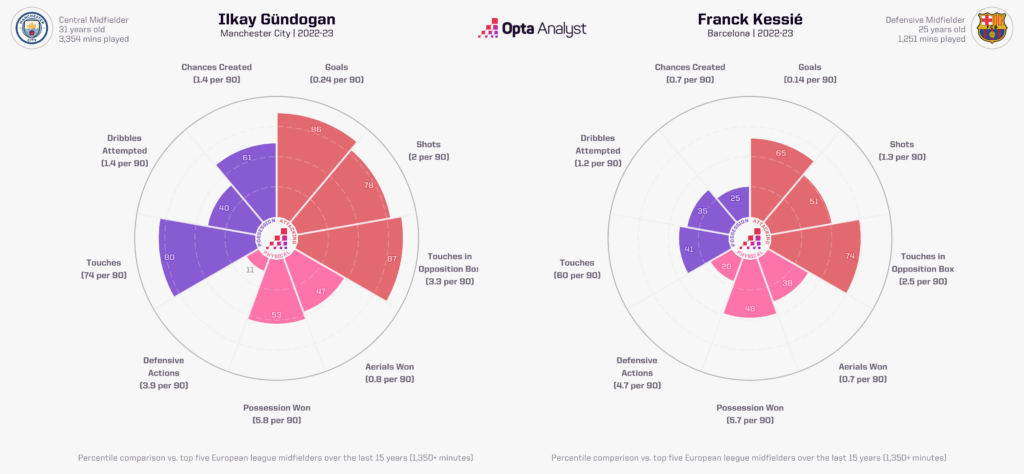
The old cliche that Rome wasn’t built in a day is a gross underexaggeration. The Sistine chapel alone took eight years. Guardiola said: “Johan Cruyff painted the chapel, and Barcelona coaches since merely restore or improve it.” Xavi won’t be given eight years to create a masterpiece but he isn’t going to fix every problem in one summer either at a time of belt-tightening in Barcelona.
Until then, he will have to make do with what he has but Gündoğan should offer inspiration as he tries to follow the works of art that have been created before him.
Enjoy this? Subscribe to our mailing list to receive exclusive weekly content. And follow us on Twitter too.
